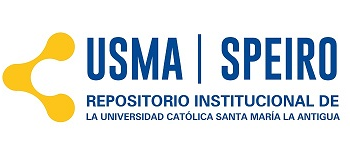Mapeo electromagnético en el dominio de las frecuencias y uso de la tomografía de resistividad eléctrica en el sitio hispánico de San Carlos de Portobelo, Panamá
DOI:
https://doi.org/10.37387/ipc.v8i2.145Keywords:
Geophysical prospecting, San Carlos de Portobelo, electromagnetic survey EM-38, 2D electrical resistivity tomography, fortified architectureAbstract
The study of the military defense of San Carlos on Portobelo, its fortified architecture and the construction techniques used by Spanish military engineers during the last decades of the 17th century is a collaboration of the Santa Maria la Antigua Catholic University to the National Directorate of Historical Heritage of the Ministry of Culture of Panama. In search to study the knowledge of the historical asset deeply in the face of the problems of Portobelo fortification complex currently considered as “World Heritage in Danger”, the Technological University of Panama was requested to carry out geophysical tests in specific areas at the site, with the purpose to obtain information that contribute to determinate constructive characteristics of the current wall structure system and to identify the location of possible architectural components underground to be analyzed in a future stage of archaeological studies.This work presents the results of a first phase of electromagnetic prospecting type in the frequency domain and 2D electrical resistivity at the fortified site of San Carlos on Portobelo, Colon Province. This Hispanic-type structure constitutes an architectural and archaeological site of great interest due to its historical significance of not having been concluded by the Spanish Crown. The geophysical sessions were developed in two specific areas: the Puerta de Tierra Gateway – South entrance to the city – and the San Pedro Bastion. In the first zone, the apparent electrical conductivity map obtained with the vertical dipole configuration (150 cm effective depth range) revealed no abnormalities linked to buried archaeological features; although, the map obtained in the effective depth range of 75 cm (horizontal dipole configuration) presented some anomalies of low electrical conductivity (high electrical resistivity) which could be associated with possible buried features or firm soil, with a low moisture content. In the same zone, 2D electrical resistivity scans offered valuable information regarding the depth of the walls that still emerge in this circumscribed area of the site and in the same way, the foundations located at the entrances of the mentioned area. Instead, in the San Pedro Bastion, 3 electrical resistivity tomographies were developed obtaining information regarding the depth of the wall; the rest of the anomalies of low electrical resistivity are associated with soil of high moisture content.
Downloads
Published
How to Cite
Issue
Section
License
1. The authors preserves the patrimonial rights (copyright) of the published works, and favors and allows their reuse.
2. The journal (and its contents) use Creative Commons licenses, specifically the CC BY NC SA type, where: "the beneficiary of the license has the right to copy, distribute, display and represent the work and make derivative works provided you acknowledge and cite the work in the manner specified by the author or licensor."
3. They can be copied, used, disseminated, transmitted and exhibited publicly, provided that: i) the authorship and the original source of its publication (magazine, publisher and URL, DOI of the work) are cited; ii) are not used for commercial purposes.
4. Conditions of self-archiving. Authors are encouraged to electronically disseminate the post-print versions (version evaluated and accepted for publication), as it favors their circulation and dissemination, increases their citation and reach among the academic community.











